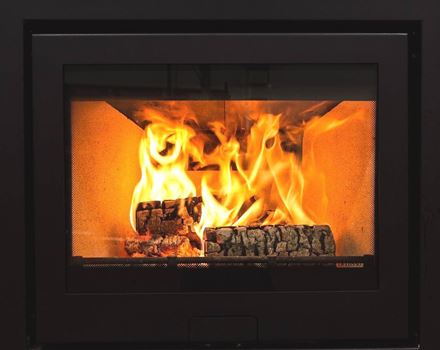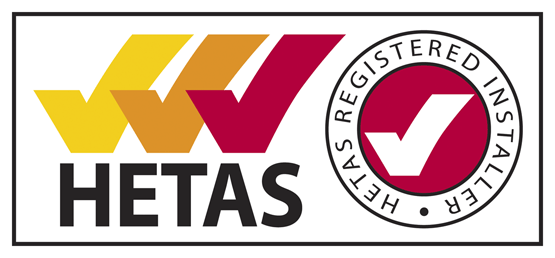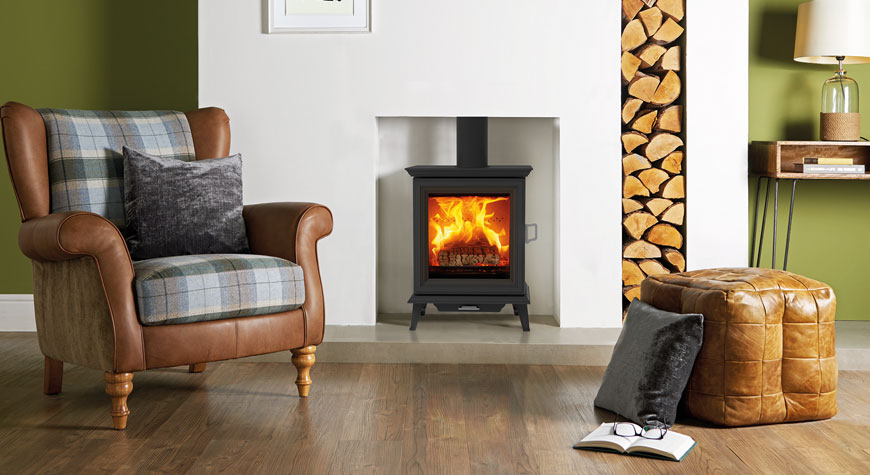As the cold nights begin to draw in, many people will be firing up there wood-burning stove to create that deep seated heat which makes them stand out from other forms of heat. While many people will be aware of the simple safety tips associated with using a wood-burning stove, it does no harm to remind ourselves.
Maintaining a distance between the stove and surrounds
It is imperative that you maintain the appropriate distance between flammable and inflammable materials around your stove. This information will be detailed in the user guide you receive with your new wood-burning stove and should be followed to the letter of the law. Over time we have seen major problems where surrounds have dried out and eventually combusted. Whether or not you are there when it catches fire we can all imagine the potential outcome. Read the book and follow the guide!
Start small and add wood
Many people using their wood-burning stove for the first time will have the temptation to pile high as they light their stove. The correct advice is to start relatively small and as the wood fuel begins to take hold, simply add more fuel to the fire. This avoids overheating and the issues this can have with regards to your stove and flue pipe. It also ensures that you are obtaining maximum efficiency with your fuel.
Chimney inspections
The traditional advice is to have your chimney inspected at least once every 12 months to ensure that your flue pipe is safe and there are no issues within the chimney chamber. Many people have found a buildup of a tar like material within the flue which not only impacts efficiency but can also combust. The last thing you want is a chimney fire within your flue which can cause serious damage. It is relatively inexpensive to have your chimney inspected and if repair and maintenance is required, it is advisable to get them done as soon as possible. Investment in the short term could lead to significant cost savings and safety benefits in the long term.

Burn seasoned and dry wood
We all know that when using a wood-burning stove you should only burn seasoned and dry wood with a moisture reading of less than 20%. The temptation to throw rubbish, varnished and painted wood onto the stove is tempting, but potentially dangerous. Not only will this impact the efficiency of your stove, and lead to a potential buildup of tar in the flue pipe, but the fumes can be deadly. So, resist the temptation to burn cheap rubbish and keep to seasoned and dry wood to get the best out of your stove.
Do not store wood next to your stove
While stoves with prebuilt storage areas for wood have been tried and tested, resist the temptation to store loose wood next to your stove. It goes without saying that wood is combustible and can potentially lead to major fires if stored too close to your stove. The vast majority of people tend to keep there wood in a safe, dry and secure area outside and bring in fuel when required. While this is common sense, some people try to bend the rules and have unfortunately paid the price with excessive damage and potential risk to life.
Install safety detectors
Smoke alarms and carbon monoxide detectors are legally required in homes up and down the country. Smoke alarms tend to be useful in alerting those in a different room or outside of the home to potential problems. Carbon monoxide detectors are literally priceless, detecting carbon monoxide gas which is clear in colour and has no smell. These detectors should be tested on a regular basis to ensure they’re in good working order because quite literally they can and do save lives.

Safety for pets and children
You will no doubt have seen the array of stove guards available which offer a very useful means of keeping pets and children away from a hot stove. The price of stove guards can vary significantly but if you have pets or children this is but a small price to pay for their safety. In many cases can they also help to avoid accidental damage to your stove, which will ultimately save you money.
Disposing of ashes
It is essential that you dispose of ashes as safely as possible because the smouldering waste fuel can still cause fires. It is the fact that ash is still relatively hot sometime after the last piece of wood has been added which is often underestimated by people. Collect the ash in a metal container, once the fire has died down, and safely dispose of it outside. Many people choose to wet the ashes to reduce the temperature and therefore any potential danger.

